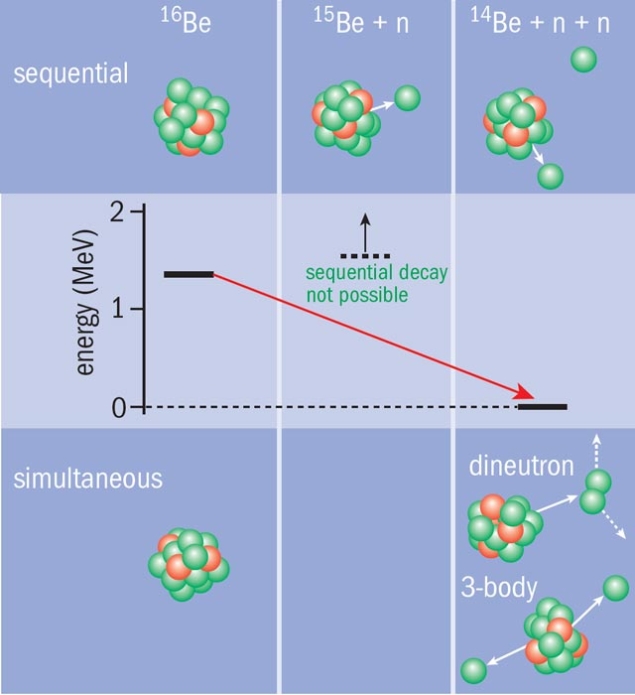
Image credit: T Baumann/NSCL.
Researchers in the Modular Neutron Array (MoNA) collaboration have found evidence for a new nuclear-decay mode at the National Superconducting Cyclotron Laboratory (NSCL) at Michigan State University. Artemis Spyrou, Zach Kohley and their colleagues have recently published results on the first confirmation of dineutron decay, which has long been hypothesized but never detected directly (A Spyrou et al. 2012).
Beginning with a beam of 17B at 53 MeV/u produced by the Coupled Cyclotron Facility, the nucleus of interest, 16Be, was created by knocking out a proton from the beam. The 16Be decayed immediately into a 14Be fragment and two neutrons. The charged fragment, 14Be, was deflected by the sweeper-dipole magnet and detected in a suite of position- and energy-sensitive detectors. The neutrons were detected in MoNA.
There are three decay-modes that the dineutron emission could proceed through: a sequential emission of the two neutrons through the intermediate system 15Be; a simultaneous emission of the two neutrons via a three-body break-up; and a dineutron decay, where the two neutrons are assumed to be clustered together inside the nucleus. Only the latter model was able to reproduce the experimental results and, in particular, the two-neutron correlation parameters. By observing a small angle between the two neutrons the team could demonstrate that these were emitted together as a cluster, and thus as a dineutron. 16Be was found to be a rare case where the two neutrons are emitted simultaneously because the decay through the intermediate system, 15Be, is not energetically favourable.
This experiment showed for the first time that a dineutron decay is possible in these extremely neutron-rich systems. The observation can improve understanding of nuclear binding, especially at the limits of nuclear stability, and help to create more reliable models for describing the astrophysical processes.
Further reading
A Spyrou et al. 2012 Phys. Rev. Lett. 108 102501.








